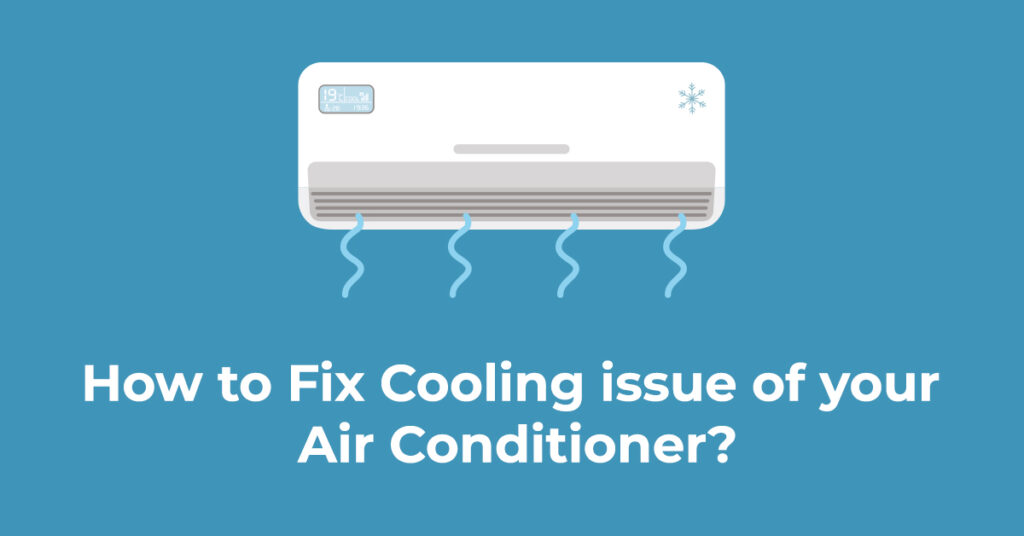Introduction
We’ve all been in that situation. Sweating it out during a restless night…or slogging it out in the sweltering heat of a July afternoon. It’s no fun when your air conditioner doesn’t work, but it happens. And it won’t be in the middle of winter when it happens. It will be the hottest day of the year, and no matter how low you set the thermostat, the air conditioner will not blow cool enough air.
The condenser unit (AC unit or heat pump) outside your home is just part of an air conditioning system. An indoor air handler unit (furnace or fan coil), an evaporator coil, air filter, thermostat, and copper tubing (refrigerant lines) that link the indoor and outdoor systems are all common components of split-system air conditioners. So, to the question, “Why isn’t my air conditioner cooling the house?” There are a few options. But don’t be concerned. Just because your system isn’t cooling doesn’t mean you have to spend a lot of money on AC upgrades or a new system.
The majority of homeowners are capable of performing simple troubleshooting and will be able to resolve the problem. However, there are occasions when you’ll need to contact AC Services or AC Repair Services for air conditioning service.
General Problems Faced
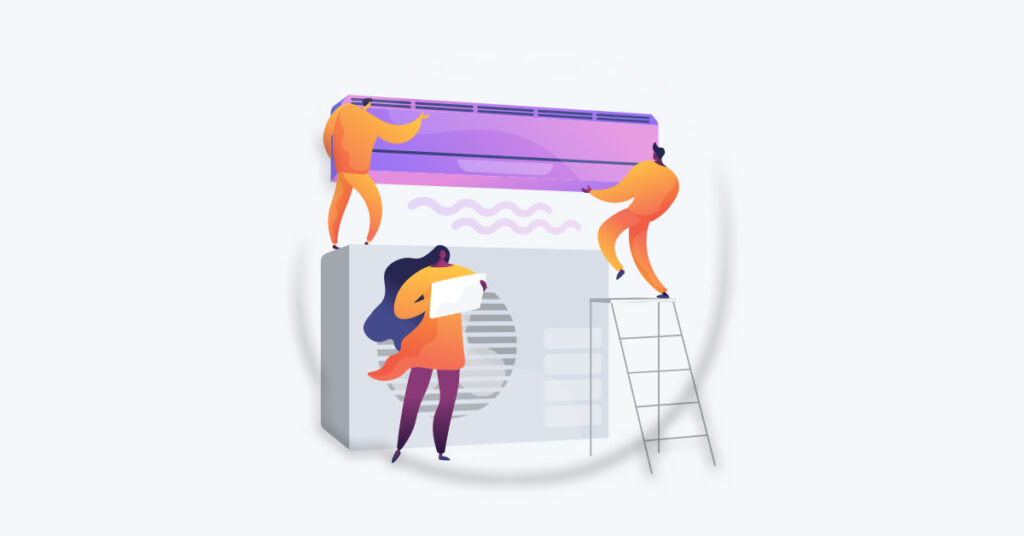
When the air conditioner stops working, it could be a sign of a serious problem or it could be as plain as a blown fuse or tripped circuit breaker.
While many issues with your air conditioner would necessitate the services of a licenced technician, we have found that simple problems can often be resolved by a homeowner with a little troubleshooting.
We’ve put together the following troubleshooting guide to assist you in resolving four of the most popular air conditioner problems.
It’s important to remember that a lot of common air conditioner issues are caused by poor maintenance. We recommend that you set up an annual maintenance schedule for your heating and cooling systems to help prevent potential problems.
1. You can’t get your air conditioner On
If your air conditioner isn’t working, check to see if the condenser is running outside. Check that the device is turned on and that your thermostat is adjusted correctly.
Lower your thermostat by 5 to 10 degrees to see if that solves the problem—and make sure your thermostat is set to cool. Many thermostats are complicated, as our Maintenance Manager, John, points out, and homeowners can be able to save time and money by reading the manual.
Then see if the problem is caused by a blown fuse or a tripped circuit breaker.
If your air conditioner either won’t turn on or your coil is frozen, you might have a problem with your motor or compressor and will need to have your device repaired by an AC Repair Service professional.
2. The air conditioner isn’t cooling properly.
If your air conditioner turns on and your thermostat is adjusted correctly, but your machine still doesn’t cool, it may be due to a dirty or blocked air condenser. The first step is to inspect the outside device and clean up any debris or weeds that are obstructing airflow.
After that, make sure your filter is safe. The filter is often found to be dirty, and when it limits airflow to the evaporator coil, the coil will freeze. If you have pets or use your air conditioner regularly, you can need to change your filter more often. Take your filter out and see if you can see through it as a test.
If your air conditioner is still not cooling, you might have a compressor or refrigerant problem and will need to call a professional.
3. Your Air Conditioner Isn’t Cooling Your House Enough
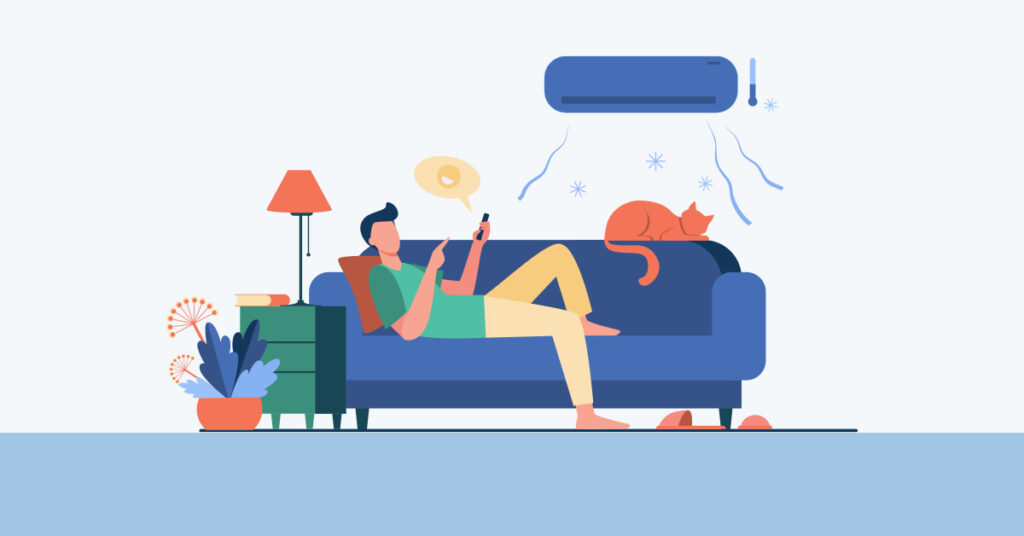
If your air conditioner is turned on and set properly but your home still isn’t cool enough, you can have a unit that isn’t the right size for your home.
Remember that your cooling system should be sized to keep your home cool on a typical summer day. The average device should be able to sustain a temperature difference of 20–25 degrees between the outdoor and indoor environments. To put it another way, your air conditioner isn’t meant to hold your home at 68 degrees while the outside temperature is 95 degrees.
If your air conditioner still can’t keep up on a hot summer day, you might have a charging issue or a frozen evaporator coil. If your outdoor device is icing, turn it off and call an AC Service professional.
WHY DIDN’T THE AIR CONDITIONER BLOW COLD AIR?
There are a number of reasons why your air conditioner could be working but not lowering the temperature in your home, ranging from basic problems like an improperly set thermostat or a dirty filter to more complicated situations requiring part replacement. Before contacting a specialist, there are a few things you can look into. Visit our AC Service troubleshoot an air conditioner page for more details.
- The Thermostat has been set Inaccurately
Check your thermostat settings first if your house is getting a little hotter than normal. Make sure the temperature is set to cool. Check the temperature setting to make sure it hasn’t been adjusted if the thermostat is set to cool. Turn it back to cooling mode if it’s turned off, set to heat, or set for a constant fan (sometimes simply labelled “on”). Wait a few minutes after the machine has turned on before checking for cold air blowing from the registers. If it’s cold, there’s no need to worry! If not, proceed to the next step in the troubleshooting process: inspecting the air filter.
- Filter that is clogged with dirt
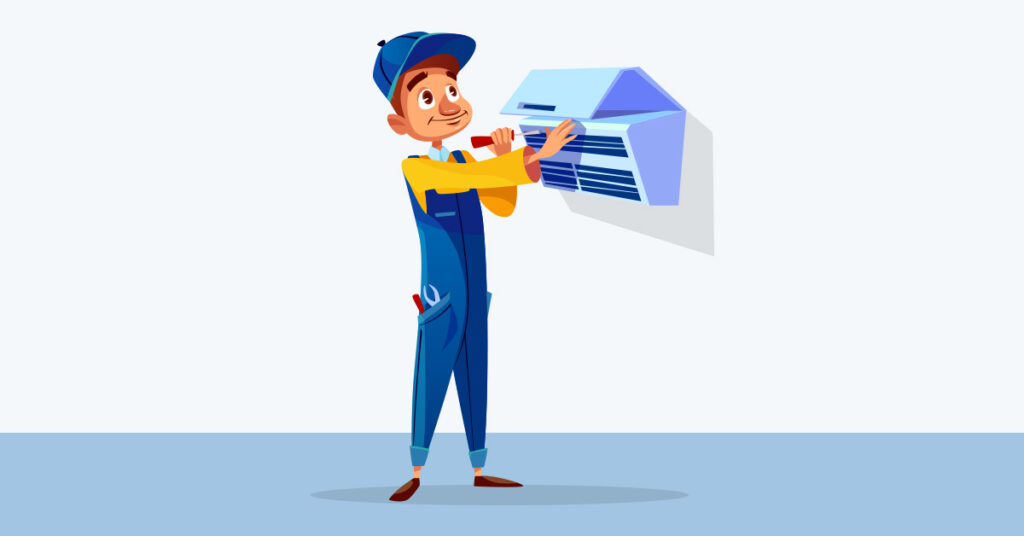
Your air conditioner may have an air filter in or near the indoor air handler assembly. When dirt, dust, and other airborne particles join the air handler machine, the filter captures them. It keeps the system’s components cleaner and more functional, and it can also help keep the air in your home cleaner. A clogged air filter can obstruct airflow and cause your home to overheat. It may also trigger the machine to shut down completely in severe cases. Look for your system’s air filter, turn it off, uninstall it, and check it if your thermostat is working properly but you still don’t have cool air.
- Blocked Condenser Unit
Your central air conditioning system most likely requires an outdoor condenser unit, as previously mentioned. The condenser unit’s exterior features a huge outdoor coil that wraps the majority of the way around the unit. The coil is made up of a collection of thin metal “fins” that are very closely spaced. The coil is made up of a collection of thin metal “fins” that are very closely spaced.
A blocked or clogged condenser coil could be the cause of your air conditioner running but not lowering temperatures inside. The condenser fan pulls air into the outdoor device through the condenser coil to extract heat energy from your home when it’s working properly. Dirt, grass, and other airborne debris can clog the coil by accumulating between the fins.
A dirty coil may result in lower energy efficiency, a lack of cool air at the registers, or, in the worst-case scenario, a complete system shutdown or compressor damage due to overuse Clearing dirt, properly vacuuming the coil with a brush attachment, or gently rinsing the coil with a hose are all options for cleaning the coil. If your machine is still not cooling, it’s time to call a professional.
- Heat Pump that has been damaged
Your outdoor device may be a heat pump in some situations. A heat pump resembles an air conditioner, but it contains additional components that allow it to cool and heat your home. It works similarly to an air conditioner’s condenser device in terms of cooling and is susceptible to the same problems – filthy, clogged coils, frozen coils, refrigerant leaks, compressor malfunctions, and so on.
Check the thermostat settings, the air filter, and the condenser unit for previously mentioned issues if your heat pump system isn’t cooling. If everything appears to be in order but you’re still hot inside, contact AC Repair Service Centres.
- Frozen Evaporator Coil
An evaporator coil is part of the indoor portion of your central air conditioning system. If your indoor appliance is a boiler, the evaporator coil is located outside the furnace in its own cabinet. The evaporator coil is located within the fan coil cabinet if the indoor device is a fan coil (typically as part of a heat pump system). Warm indoor air flows through the evaporator coil, which removes heat energy and humidity. The air is then pumped back into your house, making it cooler and more comfortable.
- Frost forming on the copper refrigerant tubing coming from the coil cabinet • Inadequate ventilation
- Higher energy bills
- Excessive condensate runoff around the indoor device
- In extreme situations, frost forming on external refrigerant tubing or the outside unit are both signs of a frozen evaporator coil.
Since accessing the evaporator coil is difficult, it is better to leave resolving problems with a frozen evaporator coil to an HVAC professional.
- Leak of Refrigerant
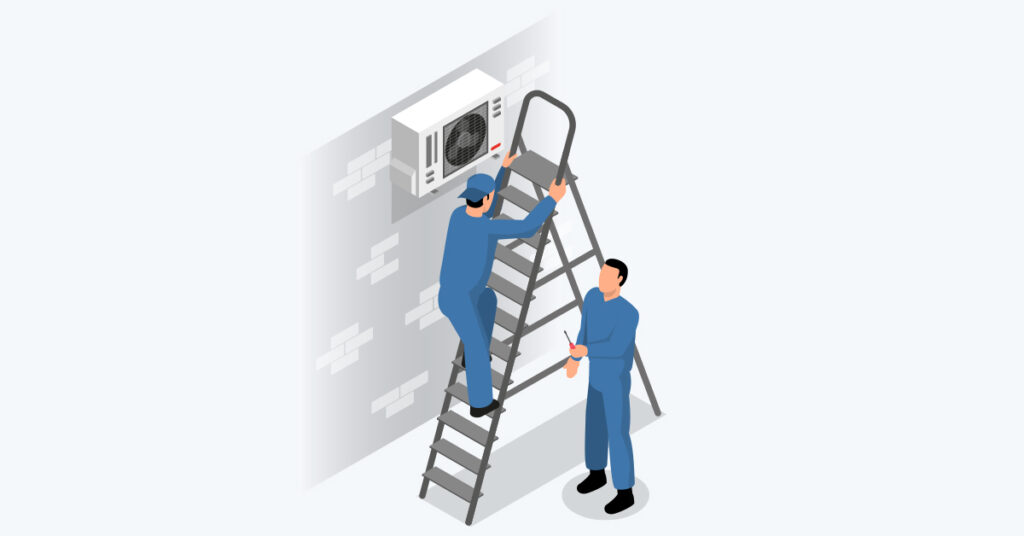
The chemical refrigerant is essential to the cooling process. It changes from liquid to gaseous shape as it passes through the system’s indoor and outdoor coils, drawing heat energy and humidity from indoor air and releasing it outside. A refrigerant leak can cause your AC system to stop blowing cold air, operate for longer periods of time without adequately cooling your house, or cause a damaged or broken compressor and complete system shutdown, depending on its severity. Another task for your local Carrier dealer is to check and resolve problems with refrigerant levels in your system.
- Inadequately sized air conditioner
Air conditioners are sized by the amount of cooling they can produce, which is measured in BTUh (British Thermal Units per hour). Under normal conditions, an undersized air conditioner could not cause any problems. However, as the temperature outside rises, your air conditioner will have to work harder to keep you cool.
Although the rating information on the cabinet panel will help you determine the size of your AC device, it will be difficult to determine if it is the “right-size” for your home. Sizing a device for your home depends on a variety of factors, including square footage, construction, and insulation efficiency, local environment, and more.
If your device is undersized, you can be able to provide cooling in trouble spots by installing a ductless unit. Alternatively, it could be preferable to replace the device with one that is the proper size.
How to rest the air conditioner?
Using a reset button:
- The first and most obvious move is to locate the reset button. One can be found on almost any unit. It’s typically tiny and bright red. If you can’t find it, check the manual for your air conditioner to see where the button is located.
- Unplug the device for at least 15 seconds before plugging it back in.
- Next, press and hold the reset button for three seconds before releasing it. If the device does not turn on, repeat the procedure.
- If this doesn’t work, look for your circuit breaker panel and try to flip the one connected to the air conditioner. At this time, your unit is likely to have turned on.
Without a reset button:
1. Some units lack a reset button, so you’ll have to manually reset the device. To begin, locate the power switch near your outdoor compressor unit and turn it off.
2. The next step is to locate the 240-volt circuit. This can be found in your home’s main electrical panel. Switch off the power to this circuit.
3. Unplug the device from the power supply board to ensure it is fully powerless.
4. You must leave the device unplugged and turned off for at least 20 – 30 minutes to enable the charge to dissipate.
5. After you’ve waited, make sure your device is set to “cool” and reconnect the power supply. Reconnect the 240-volt circuit, as well as the power shutoff near the compressor outside. Since you’re working backward from how you switched it off the first time, it’s important to follow this order.
If resetting your air conditioner doesn’t solve the issue, contact AC repair services today to schedule an AC repair.
Signs that your AC isn’t working properly
You may be wondering how to say whether your productivity has decreased. Some signs that indicate the improper working of our AC
- Increased Costs
If your utility bills are rising, this is one of the most visible indicators of AC inefficiency. When an air conditioner isn’t running efficiently, it uses more resources. It’s a good idea to have the machine tested and cleaned if you find a major increase in your use and costs. The expert will be able to figure out what is behind the higher costs.
- Frequent Cycling
Your thermostat is the “brain” of your air conditioning system. If you find it cycling on and off too often, it’s possible the thermostat needs to be replaced. The internal mechanism of the thermostat can be harmed by everyday use and dust. The compressor may also be causing your machine to cycle frequently. It’s best to enlist the help of a specialist to pinpoint the exact problem.
- Ice formed on the Compressor
If ice begins to form on your air conditioner, it’s a sure sign that you’ll need professional help. If there is a leak in the coolant line, ice may form.
Another cause of this issue is whether your coils have been damaged. This issue may also be caused by a clogged filter. If your device has ice on it, you can be sure it isn’t running as effectively as it can.
- Unusual Sounds
Appliances in your home can produce its own distinct tone. You’ve already become accustomed to some of the noises that occur as a result of your unit’s normal service.
If you find something out of the ordinary, turn it off to avoid the problem from getting worse and schedule a service call.
Now that you’ve identified the symptoms of inefficiency, it’s time to figure out how to combat them.
Effective Methods to Boost Air Conditioner Performance
Improving the productivity of your device will help you save money while also extending its existence. Continue reading to find out what you should do.
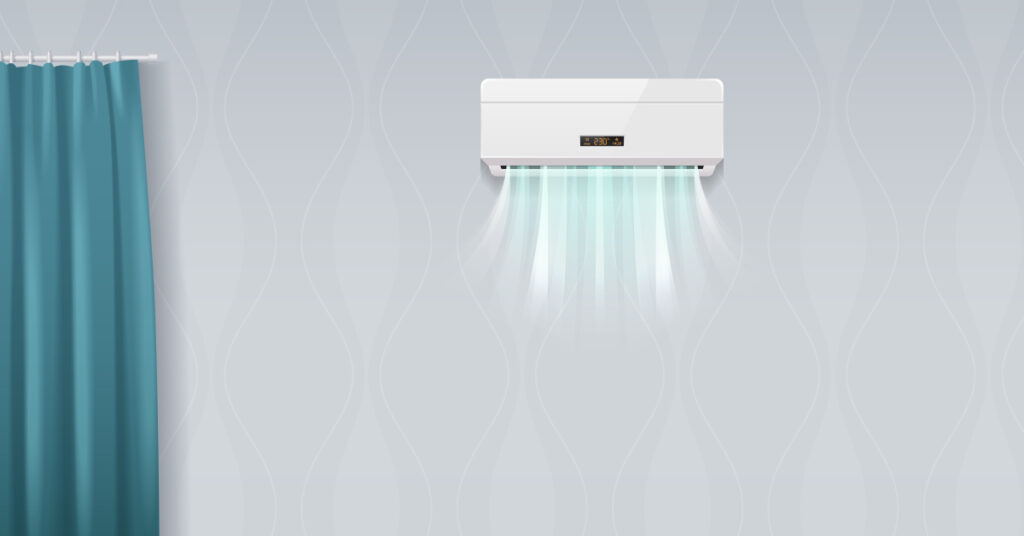
- 1. Vacuum and unblock the vents
- 2. Shut all the windows and doors.
- 3. Outside, clean the area around the condenser unit.
- 4. Keep all heat-generating appliances away from the thermostat.
- 5. Repair any leaks you find in your attic, around your windows, or under your doors.
- 6. Set Your Thermostat to a Higher Temperature
- 7. Use Window Coverings
- 8. Provide shade for your outdoor condenser
- 9. Get rid of the drain line
- 10. Insulate any ductwork that is exposed.
- 11. Replace your AC filter.
- 12. Don’t Use the Oven or Dryer
- 13. Don’t depend on the registers to keep the temperature in check.
- 14. Think about putting in a zoning system.
- 15. Schedule preventative maintenance on a regular basis.
Our mission is to assist you with any plumbing, heating, cooling, or electrical issues you might be experiencing. Our AC services and AC Repair Services are doing a great job lending hands to the people.
Also Read: AC Maintenance Checklist – Things you Should Know

